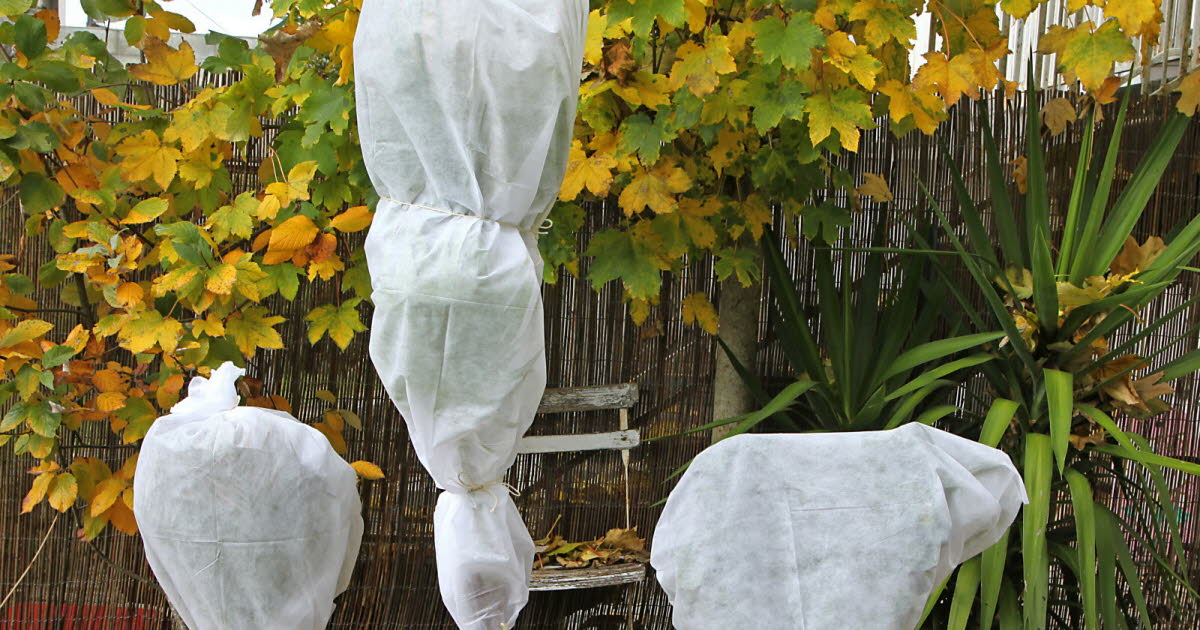Terrace: prepare winter packing
Frosts sometimes come as a surprise and threaten insufficiently protected plants in pots. Wraps made of non-woven fabric, jute, coconut or reeds help prevent damage to the roots. The winter protection, beautifully surrounded by colorful decorative tapes or ribbons, attracts attention.
If you have little space in your garden, you can also install the plants in a container in the ground, in a semi-shady corner. Dig holes deep enough to fit the plants up to the edge of the pot. In the spring, the bushes can return to the terrace.
Lawn: remove leaves
Do not leave leaves on the lawn for too long, as moisture quickly accumulates under the leaf layer and stimulates the spread of disease. The leaves also lack light and turn yellow over time.
A fan broom makes it easy to remove leaves and let the lawn dry in the sun. The leaves are best collected in wire baskets, where they can turn into humus.
Ornament: do not transplant lightly
Most shrubs tolerate repotting without problems, but there are exceptions. These are species whose root system is deep and very extensive, but little branched. This is the case with brooms, walnuts, birches and pines.
If we want to transplant perennial plants, it is almost impossible to dig a root with a stable root ball. Slow-growing shrubs such as elm, magnolia, and palm maple are also difficult to transplant.
Good soil preparation increases the chances of success. The previous fall, turn the soil around the base to a depth of 30 cm using a spade. During the following season, tender roots will form in the upturned section to support recovery after transplanting.
Vegetable garden: cut your asparagus
Once planted, asparagus provides harvests for years. After harvest, at the end of June, the stems can be allowed to grow back to allow the plants to build up nutrient reserves.
In autumn, when the leaves turn yellow, cut the stems about 15 cm from the ground. Compost healthy leaves, but if disease symptoms such as asparagus rust appear, discard leaves with green waste.
Vegetable garden: protect your beds
In winter, vegetable beds should not be left uncovered after harvesting. This promotes nutrient leaching and soil erosion. Green manure seedlings represent natural protection. Depending on the chosen species, the soil will be deeply loosened and supplemented with humus.
Papilionaceae, like lupins, harbor bacteria in their root nodules that convert atmospheric nitrogen into nitrates and thus enrich the soil with nutrients.
Orchard: store apples properly
A cool, dark cellar with good environmental humidity, with natural soil, offers ideal conditions for the storage of kernels. Apples stay fresh longer when the temperature is between 1 and 4 °C (max. 10 °C) and the ambient humidity is 80-90%. These values are difficult to achieve in modern households.
You can also lean on a frost-protected garage, wheelhouse or garden shed. Do not stack fruit on top of each other, but place them next to each other in flat shelves or stacking boxes so that they are touching as little as possible.
Interior: targeted fertilization
While many potted plants will hibernate under cover, it is necessary to distinguish between those that experience dormancy and those that remain active. Let the first one rest and water it adequately.
Fertilize tropical plants that are in the conservatory or warm living room and do not have a dormant period. Fertilize once or twice a month, with a break in January.

